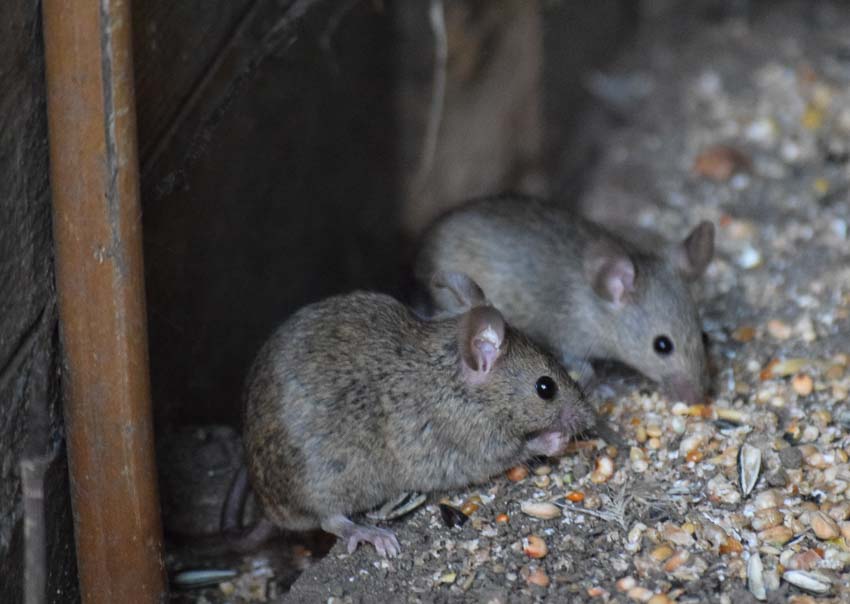In almost every ecosystem worldwide, mice and rats are keystone species that support the entire food chain. However, they are unwelcome pests that damage your property, contaminate food, and spread diseases. Learn how to get rid of field mice and rats with this comprehensive removal and prevention guide.
Understanding Field Mice and Rats
Eradication of mice and rats is easier when you can identify them. Learn more about common species and their behaviors and habits.
Identification and Common Species
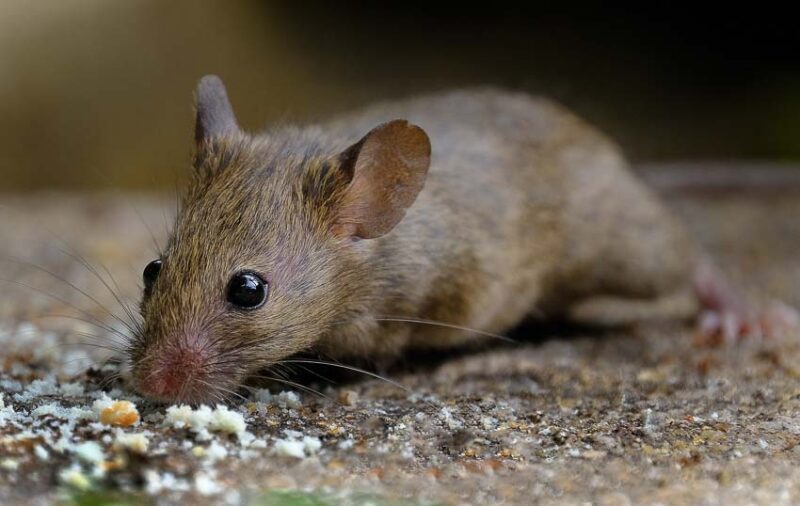
Rats and field mice are closely related, as they are both members of the largest family of mammals, Muridae. In the United States, the most common species of rats and mice live wherever humans do, with less common species living in rural forests, grasslands, and desert areas.
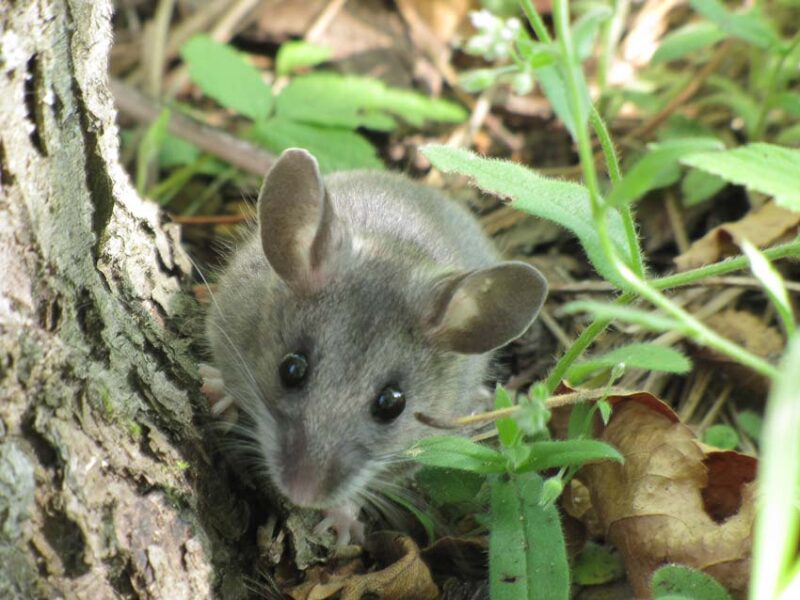
What is the difference between field mice vs. house mice? Sometimes you will find field mice in your house, but they usually inhabit outbuildings. Learn more about the characteristics of common types of mice:
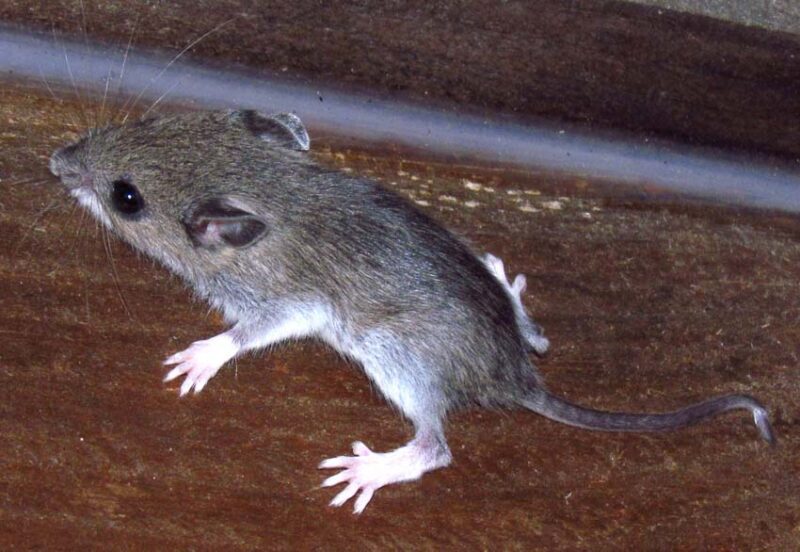
Three Main Mouse Species
| Common name | Scientific name | Identifying characteristics |
| House mouse | Mus musculus | The house mouse is the most common mouse species, with a maximum length of 3 to 5 inches. They have large dark eyes, thin ears, and a long, hairless tail. |
| Deer mouse | Peromyscus maniculatus | The deer mouse is slightly larger than a house mouse at 5 to 7 inches, and it has a hairless brown and white tail. |
| White-footed mouse | Peromyscus leucopus | The white-footed mouse is similar in appearance to the deer mouse but smaller. It’s most easily distinguished by the throat hairs, which are fully white in this species and partially gray in deer mice. |
Here are the most common species of rats in the United States and their identifying characteristics:
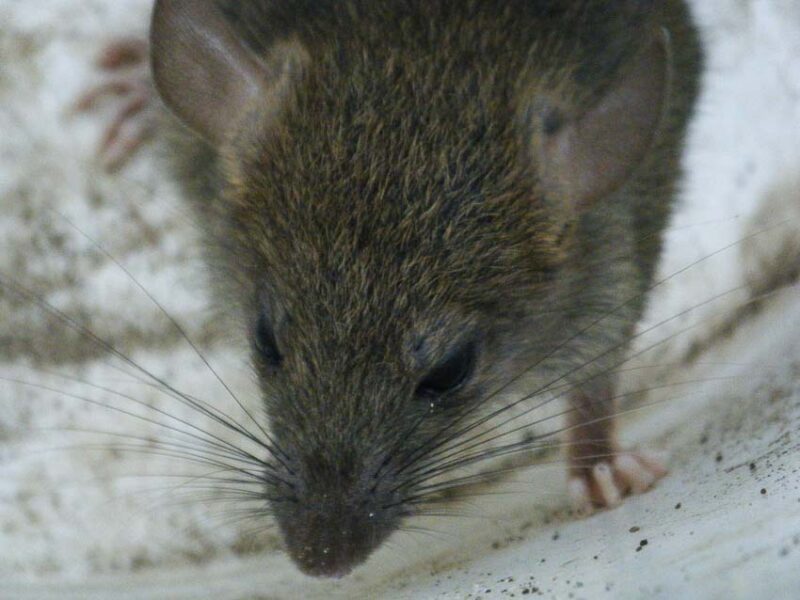
Three Main Rat Species
| Common names | Scientific name | Identifying characteristics |
| Brown rat (wharf rat, Norway rat, sewer rat, street rat) | Rattus norvegicus | The brown rat is the most common rat species in North America. It is brown or gray and usually grows to 12 to 19 inches, including a 6 to 9-inch scaly tail. |
| Roof rat (black rat, ship rat, house rat) | Rattus rattus | The roof rat is slightly smaller than a brown rat, with black to light brown fur and a light underbelly. Its tail is longer than its body. Roof rats can grow up to 16 to 18 inches long. |
| Packrat (wood rat, trade rat) | Neotoma var. species | The brown rat is the most common rat species in North America. It is brown or gray and usually grows to 12 to 19 inches, including a 6 to 9-inch scaly tail. |
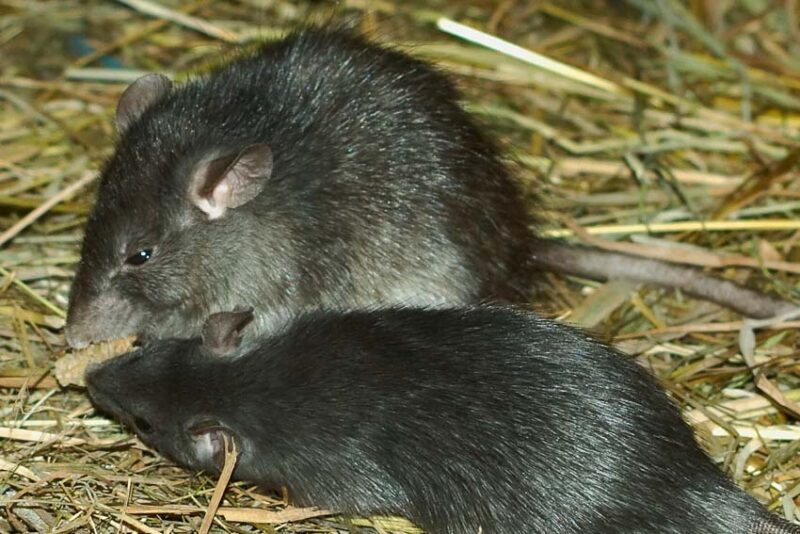
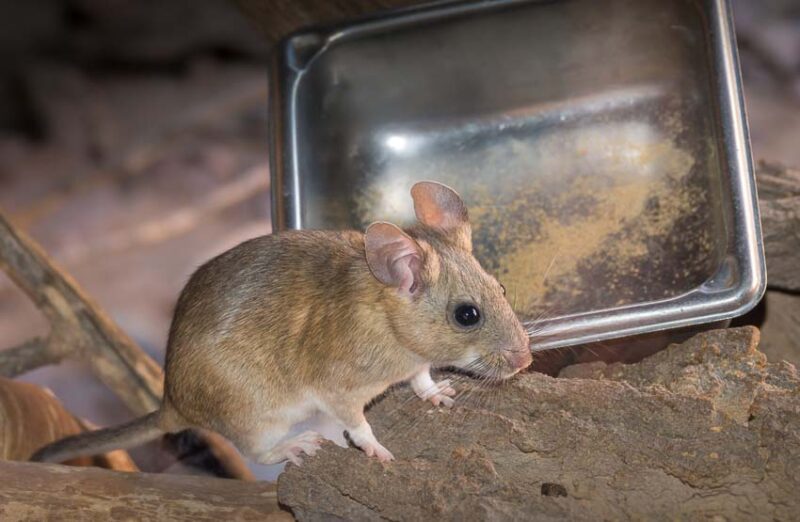
Similarities in Behavior and Habits
Since field mice and rats are closely related, it’s no surprise that they share many behaviors and habits.
- Both rats and mice are nocturnal species.
- They have similar dietary preferences.
- Rats and mice rely on the food, water, and habitats of humans.
- They both cause damage to homes and outbuildings by chewing through wood, wires, and other materials.
Differences in Behavior and Habits
Understanding the differences in the behaviors and habits of field mice and rats can make it easier to eradicate them. Mice are bolder and more curious than rats, while rats tend to be more cautious. When setting traps for them, mice are more likely to investigate a new trap, and rats will avoid it.
Another significant difference that will help you when trying to trap them is that rats like to eat protein-based foods, including meat, cheese, and fish. Mice prefer grains, nuts, crackers, and cookies.
Signs of Field Mice and Rat Infestation
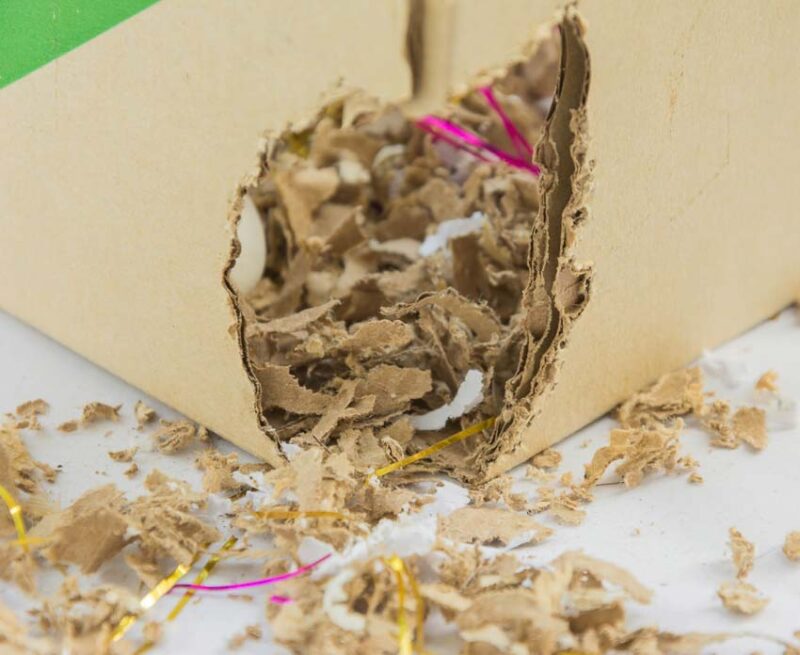
Rats and mice live around humans all the time, but you might never see them if you have a serious infestation. Here are the most common signs that you have rats or mice to get rid of:
- Rodent droppings in cupboards, under the sink, and around food and pantry areas
- Gnaw marks on food packaging
- Small entry points chewed through walls and floors
- Shredded nesting material consisting of material, paper, and dried plants
- Odors coming from inaccessible areas
Compared to mice, rat droppings and chew marks are larger, but otherwise, the signs of infestation of these two rodents are similar.
Health Risks and Damage Caused by Field Mice and Rats

Rodent infestations can pose severe health risks, especially for people who are allergic or asthmatic. Field mice and rats are vectors for many types of diseases and parasites, including the following:
- Hantavirus
- Leptospirosis
- Lymphocytic choriomeningitis
- Tularemia
- Salmonella
Mice and rats are hosts for parasites like ticks, fleas, and mites, which present other health problems, including Lyme disease. These vermin also damage your home by chewing through walls, insulation, and electrical wires. In some cases, wires that have been chewed can start electrical fires.
Because field mice and rats also contaminate food and preparation areas.
Removal Methods for Field Mice and Rats
There are several effective strategies for getting rid of field mice and rats. Some methods work for both types of rodents, but with others, you must use a targeted approach.
Traps and Baiting Techniques
Traps and baiting are the most common ways to get rid of field mice and rat infestations. They are a simple, effective, and proven strategy.
Snap Traps
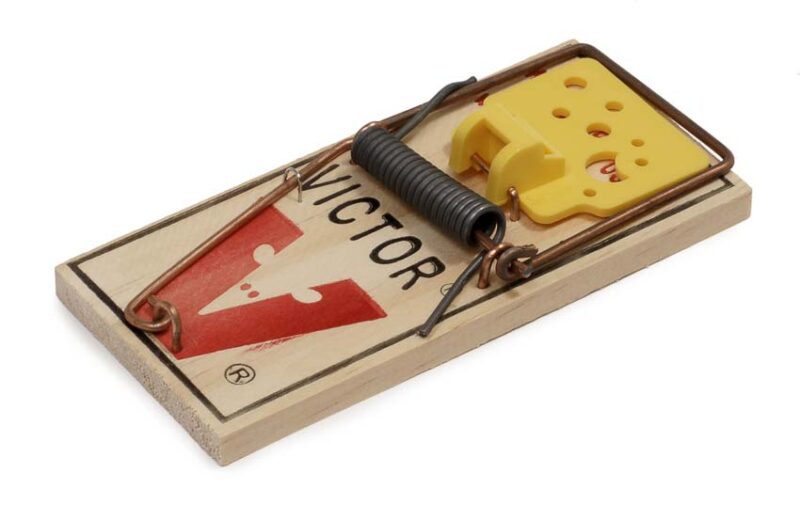
An old saying from the late 1800s is attributed to Ralph Waldo Emerson . “Build a better mousetrap, and the world will beat a path to your door.”
Just a few decades after he wrote this, the famous snap-style trap was invented. Snap traps are spring-loaded and are extremely successful at killing rodents.
Live Traps
Live traps catch animals in a cage so they can be transported to another location and allowed to go free. Humans have been using traps to capture prey for at least 7,000 years, and using them to get rid of rats and field mice is an effective strategy.
Glue Traps
The least humane method of getting rid of mice and rats is the glue trap, which is a super sticky board that captures rodents. They are remarkably effective for mice, but rats are more cautious and often escape a glue trap. Rats have been known to chew off their appendages to escape a glue trap. Because they are inhumane, they have been banned in some countries.
Natural Repellents and Deterrents
Rats and field mice have extremely keen senses, and strong-smelling scents easily deter them, as do sounds they don’t like.
Peppermint Oil and Other Essential Oils
Spray peppermint oil in places where you suspect mice and rat activity to deter them. Use about 20 drops to a quart spray bottle of water and apply it regularly to keep them away.
If you prefer, you can use these essential oils instead:
- Lemon and other citrus oils
- Eucalyptus
- Citronella
- Lemongrass
- Cedarwood
- Cinnamon
- Rosemary
Ultrasonic Repellers
There are ultrasonic-repellent devices available for all sizes of animals. The kind that is used to get rid of rodents plugs into a wall outlet. Ultrasonic devices have short-term effects, so don’t rely on them as a preventive measure.
Ammonia-Soaked Cotton Balls
Soaking cotton balls in ammonia and placing them under your sink, in cupboards, and in your pantry is an effective strategy for keeping mice and rats at bay. Rodents avoid ammonia because it makes them think a predator is nearby.
Professional Extermination Services
Rats and mice can be difficult to get rid of by yourself. If you’re unsuccessful, contact a professional exterminator for assistance.
Rat Extermination Costs
Professional rat extermination costs between $170 and $500, with most people paying about $350. If you have a severe infestation, you could pay as much as $1,200 or more, depending on the size of your house and the number of visits the exterminator needs to make.
Mice Extermination Costs
Extermination costs for mice infestations usually cost homeowners between $200 and $600, with one-time treatments averaging about $250. Annual plans with monthly treatments are one of the best treatment methods. The initial cost is typically between $100 to $250, and subsequent visits cost $50 to $100 monthly or every other month.
Prevention Tips to Keep Field Mice and Rats Away
Removal and extermination are only part of keeping your home rodent-free. Prevention is the key to ensuring long-term success and getting rid of field mice and rats.
Seal Entry Points and Eliminate Access
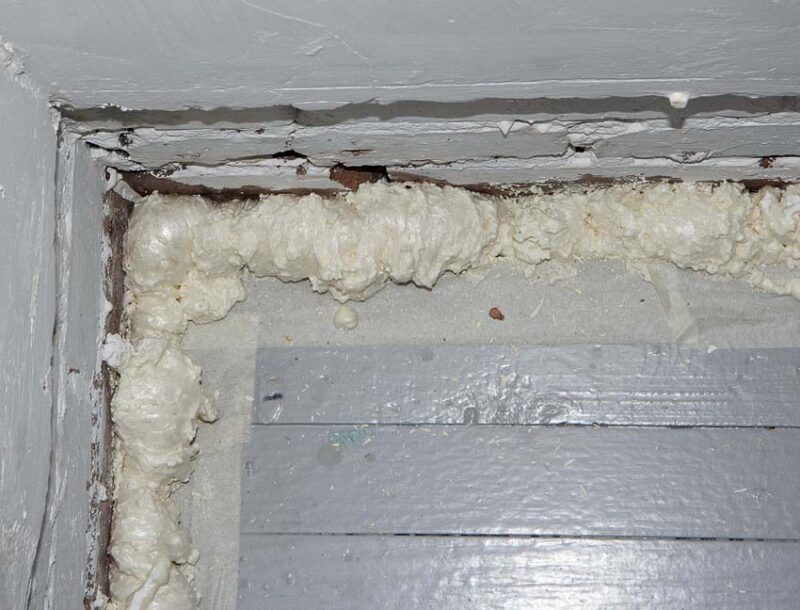
Depending on the size of the rodent, they can fit through holes as small as ¼ to ½” in diameter, and most rats can fit through holes as small as an inch. Close off any access points you find by stuffing them with steel wool and using caulk to keep it in place. You can also seal openings with expanding foam.
Here are some common places to look:
- Transitions from one part of a building to another
- Holes and cracks in foundations
- Plumbing and utility access holes
- Dryer vents
- Windows
Make a thorough sweep of the outside of your house, and then go inside and look for holes along the bottoms of the floors near the baseboards. Replace floor registers with screen floor vents and seal all plumbing holes coming from under the house. You should also use weatherstripping around doors and windows to keep mice and rats out.
Proper Food Storage and Waste Management
Food is one of the main attractants for mice and rats, and it’s why they like to live with people. Keep all food sealed in containers, and never store it on the floor. Mice and rats can chew through plastic wrap, paper, cellophane, and foil packaging.
Garbage and compost piles are another attractant. Use waste receptacles that seal, and locate your compost pile as far away from your house as possible. Keep it moist and turned regularly so it’s less appealing to rodents, and keep the area around it mowed and clear of brush.
Regular Cleaning and Maintenance
Rodents are attracted to food, water, and cover. Even a few crumbs will entice a field mouse or rat, so it’s important to keep countertops and kitchen sinks clean and clutter-free. Fix leaky faucets and pipes that provide a constant water source for rodents.
Yard Maintenance and Vegetation Control
If your yard has tall grass and a lot of brush, especially around the foundation of your home, it makes it easy for rodents to slip in and out unseen by predators. Make your home and yard less appealing to rodents by keeping your lawn neatly mowed and pruning shrubs and trees away from the house.
Pet Food Management
Field mice and rats love pet food because it has all the nutrients they need, and they can easily carry it back to their nesting or cache sites. Store pet food in an airtight container and only feed your dog or cat what they can eat in one sitting.
Field Mice and Rats FAQs
What diseases do field mice and rats carry?
Field mice and rats carry numerous diseases. Some of the most common diseases are hantavirus and tularemia. They are also hosts for parasites like ticks, fleas, and mites.
How do I locate and seal entry points?
To seal rodent entry points, start on the exterior of your house. Use caulk in every crack that’s over a quarter inch wide. Then, go indoors and inspect each room, sealing holes in floors and walls. Don’t forget to address gaps in your doors and windows.
Can I use poison to eliminate field mice and rats?
Using poison to eliminate field mice and rats has serious drawbacks. They usually die inside your home, and poisons can be dangerous around pets and children.
What are some natural ways to deter field mice and rats?
Essential oil sprays are one of the best ways to deter field mice and rats, and they work well on many other types of pests. They are safe for the environment and won’t harm your pets or small children. You can also use vinegar or ammonia-soaked cotton balls or rags to keep rodents away.
How long does it take to get rid of a field mice or rat infestation?
How long it takes to get rid of an infestation of field mice or rats depends on its seriousness. With persistent effort, it could take as little as two weeks, but with a severe infestation, it could require up to three months.
Got other pests? We’ve got answers. Check out our guides to getting rid of raccoons, groundhogs, deer, termites, aphids, grubs, and ants!

